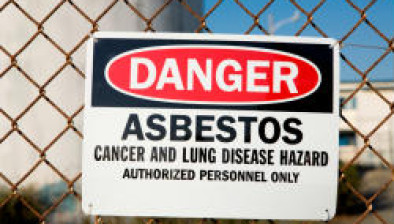‘Managed’ asbestos in homes is a time bomb, experts warn

Scientific charity the British Occupational Hygiene Society (BOHS) and the professional body for asbestos scientists the Faculty of Asbestos Assessment and Management (FAAM) are calling on anyone who may have asbestos in their buildings to urgently review their management plans.
New research published jointly by the National Organisation of Asbestos Consultants (NORAC) and the Asbestos Testing and Consultancy (ATAC) was highlighted last week in a Parliamentary event. Its findings, based on what the Society believes is the largest study in the world of asbestos in buildings, makes for alarming reading. The study highlights that asbestos which may have been left in place in many public buildings and homes, including social housing, is not being managed effectively and may not be safe.
“We weren’t looking for this, but when we looked at the data, the figures leapt out at us. Almost two thirds of UK sites, based on a million samples taken over six months, showed that the asbestos left in the buildings as “safe” was actually now in a damaged state,” said Jonathan Grant, NORAC chair and Registrar of the professional body for Asbestos Analysts (FAAM). “When asbestos is damaged, it may create a risk to occupants, releasing fibres which, if inhaled, can lead to irreversible cancer.”
Asbestos in building materials was banned in 1999 but was previously widely installed in buildings for a range of uses, including, insulation and fireproofing. Even restoration work in Parliament had to halt because of the discovery of unexpected asbestos. Earlier this year, MPs called for asbestos to be removed from all UK buildings within a 40-year timeframe, a target rejected by the government. However, this decision came before the shocking findings in the report by asbestos experts.
“It’s an impossible situation. Developers, social housing landlords, schools and hospitals don’t want to pay to have asbestos removed from property, but clearly the management strategies in place are not working,” says Professor Kevin Bampton, CEO of BOHS. “At the moment, you can leave asbestos in a part of the building and just lock the door – and that counts as management of the risk.”
The European Commission recently bowed to pressure by the European Parliament and has proposed a package of Europe-wide measures to increase protection for the public and workers from asbestos exposure, with some parts of Europe moving ahead with a plan to remove all asbestos. However, the UK government evidence to Parliament earlier this year stated that Britain had the biggest problem in Europe but used this to justify why the UK population would get less protection.
The Health and Safety Executive, Britain’s regulator for most asbestos in buildings has accepted most of Parliament’s recommendations and is currently undertaking an inspection of asbestos in schools. However, it does not have the remit to look at asbestos in social housing. The NORAC/ATAC report highlighted the extent of the risk of managed asbestos in social housing, creating a particular area of concern.
“The government have rejected the Select Committee’s target of removal of asbestos in 40 years. Even that target would mean that it will be two generations before kids can go to school without any risk of exposure to asbestos and 100 years before the last person dies of asbestos-related cancer. We are sending people up on roofs to fix solar panels and insulation, not knowing how many of them will be inhaling asbestos fibres that will kill them in a few decades time,” says Professor Bampton.
BOHS is supporting annual reporting of the state of asbestos by NORAC and ATAC, as well as moves towards a national asbestos register. In addition, it continues to call for a duty to have an asbestos survey as standard on the sale of all buildings constructed before 1999, for the proper regulation of asbestos surveyors to ensure that they are competent and for proper training of all trades liable to come into contact with asbestos in buildings, especially those involved in upgrading heating elements of buildings.
“Nobody should be selling a building with a toxic substance hidden in it that the buyer doesn’t know about. There are tax breaks for companies to remove asbestos, but they should not be selling on dangerous buildings to innocent purchasers and pocketing the profits. At the same time, when we upgrade our homes and heating systems, we don’t want to expose workers or the building occupants to fatal risk. But we also want to be able to rely on the people who survey asbestos to be up to the job. It’s applying the same common sense to asbestos as we do to other hazards in buildings,” says Mr Grant.
The Society is also calling on the government to give regulatory responsibility to HSE for the Social Housing sector, which currently is not fully accountable for asbestos management and where major risk of domestic asbestos exposure lies.







